If you think that the role of artificial intelligence in eCommerce is still in its nascent stages, look at the way Amazon operates. Remember how the platform recommends what you might like to buy next? Or how it remembered - and reminded - you what you bought the last time around?
That's the magic of AI at play.
Like Amazon, there are many eCommerce platforms that are tapping into the potential of machine learning algorithms, demonstrating the power of applying machine learning in eCommerce.
In fact, research by Tractica claims that AI in eCommerce is expected to reach $36.8 billion by 2025. Clearly, eCommerce AI is on an uptrend and will continue to boom going forward in 2021.
To that end, let's look at a simplified machine learning definition, its various types, and diverse applications in the eCommerce sector. Let's jump right in.
What is Machine Learning?
Though it seems like a complex-sounding concept, machine learning is a subset of AI and is simply the process of training a computer program/algorithm to continuously adapt and 'learn' from its environment to make improvements to the task given. It makes use of mathematical models to accomplish this.
Types of Machine Learning Algorithms
Typically, there are three types of machine learning algorithms that can be used based on the task given and the learning environment to be used:
Unsupervised learning algorithms:
An unsupervised learning algorithm is a data-based algorithm that does not make use of labels. Instead, it is fed mountains' worth of data and empowered with the right tools to gauge the properties of said data. This algorithm's primary job is to group, cluster, and/or organize gigantic volumes of data so that a human (or another intelligent algorithm) can make sense of it. This characteristic of unsupervised learning algorithms alone can boost productivity for industries and enterprises across the spectrum.
Supervised learning algorithms:
A supervised learning algorithm is a task-oriented algorithm and is one of the most widely used machine-learning categories as it is simple to implement and easy to use. What makes it unique is that it is laser-focused on a single task. This is the learning type that you will most likely encounter, as it is exhibited in many of the following common applications.
Here's how the supervised learning algorithm works:
- You create the data that you need to input in the form of examples with 'labels' on them.
- Then, you feed the learning algorithm these example-label pairs.
- The algorithm works toward predicting the label for each example.
- You provide feedback relating to whether the algorithm predicted the right answer (or not).
- Over time, the more and more examples you feed, the algorithm 'self-learns' until it can correctly observe, predict and perform the task.
Reinforcement learning algorithms:
To put it simply, reinforcement learning applications is a behavior-driven learning algorithm that learns by making a lot of mistakes. Think of it as an adult engaging in positive (or negative reinforcement) to teach a child something. Here's how the reinforcement learning application algorithm works:
- You assign a positive signal to the algorithm that associates it with good behavior.
- Similarly, you assign a negative signal for bad behaviors.
- Over time, this constant reinforcement of preferring good behaviors over bad ones allows the algorithm to self-learn and make fewer and fewer mistakes.
So there you go. Now that you have a simplified understanding of what machine learning algorithms entail and what are its basic types.
Table of Contents
5 Machine Learning Applications That Will Revolutionize The E-Commerce Sector
Now that you know the basics, let's understand how these are being used to take the eCommerce experience to the next level.
1. Content Personalization And Product Recommendations
"80% of shoppers will actively purchase from a brand that offers personalized experiences."
Let's face it. Knowingly or unknowingly, we've all encountered content personalization at the hands of eCommerce websites at scale and in varied forms such as:
Product recommendations: If you're still on the fence about using the Recommendation Engine tools, consider Amazon's use case, which claims that its Recommendation Engine accounts for 35% of its sales! This machine learning tool works because the algorithm is able to predict the right user patterns based on customer behavior and past purchase:

Personalized home page suggestions: every content bucket is customized to the user's needs and preferences. As mentioned before, no one does personalization better than Amazon:

Deals and offers suggestions: Machine learning can predict the best offers and deals your customers are most likely to fall for and thereby drive sales as well as user satisfaction:

Personalized email recommendations: Machine learning allows you to understand the most suitable time for sending customized email newsletters or order-related emails by predicting at what time and day of the week the recipient is most likely to open the email. This optimization directly impacts your open rates, click-through rates, and so on:
Changes in dynamic content: This includes filtering images, products, etc., and rolling out tailor-made alerts and messages for every individual buyer. Take, for instance, Fit Connect's "Fit Search" feature, which offers fit-based filtering that showcases products available in suitable sizes:

What's important to note is that this 'hyper-personalization' is based on key customer data points across their journey, such as past purchasing behavior, browsing history, paid ads, demographics, personal preferences, social media activity, among others. This is where machine learning algorithms come into play.
Today's eCommerce tech stack makes use of all kinds of customer-centric data from every hover to every page and link followed to drive personalization on a deeper level - so much so that it feels like the eCommerce website truly understands the user and can read their minds!
Key takeaway: For delivering real-time customization, as well as a consistent, cross-channel experience, you need to invest in the right machine learning applications that can understand - and apply - user data and make tweaks to critical elements such as the language, the location, the currency, deals, and discounts, among others and personalize the experience through and through. Plus, machine learning can intelligently analyze shopping behavior over and over again and eventually recommend products that your customers didn’t even know they wanted!
2. Pricing Optimization
Price optimization is key to building a loyal set of customers who are forever on the lookout for a 'better deal.' If your website's prices aren't optimized to a host of factors (think: competitor prices, demand, time of day, customer segment, etc.), you'll lose customers by the minute.
In this regard, too, machine learning technology can lend a helping hand and alter prices based on a variety of factors mentioned above instantly:
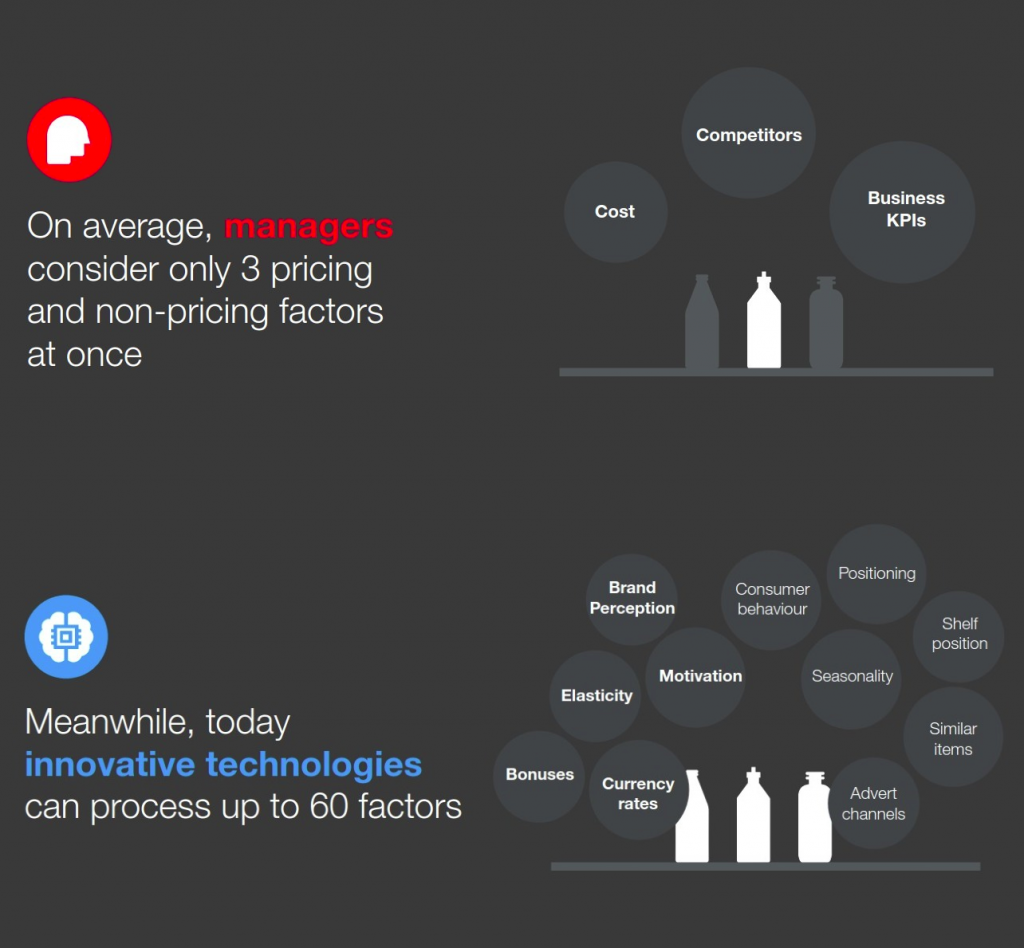
Take a look at Feedvisor's AI-based pricing technology, which allows you to optimize prices and engage in dynamic pricing:
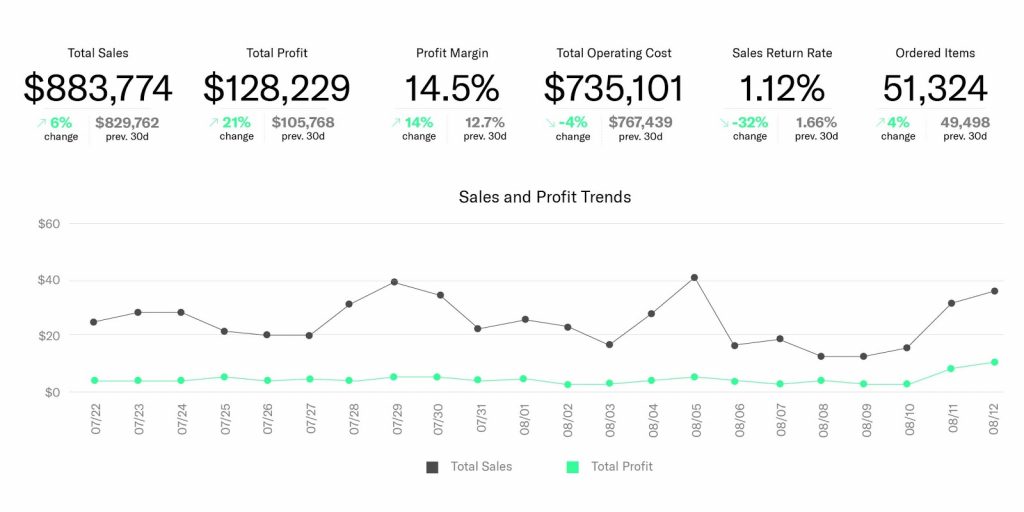
Key takeaway: A dynamic pricing system, spearheaded by machine learning algorithms, lays the foundation for consistent and organic sales every single time. Plus, it allows pricing managers to leverage speed and accuracy for pricing-related decisions of products - at scale.
3. AB Testing with Machine Learning
Truth be told, A/B testing an eCommerce website requires a lot of hard work and is a fairly laborious job. This is where machine learning truly shines. Specialized machine learning tools such as Nosto allow you to execute A/B/n, split, and multivariate testing across various parameters such as product recommendations, content, category merchandising, etc.:
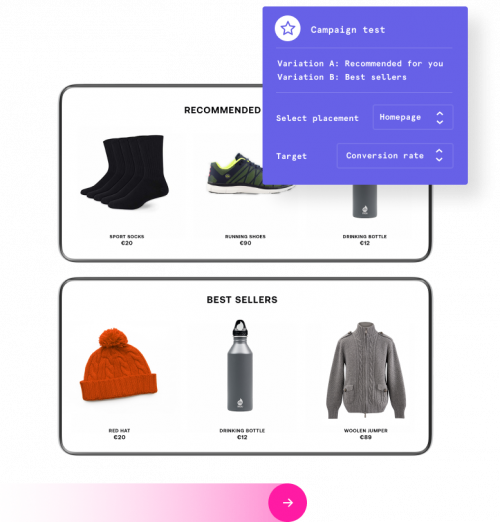
Here's a quick breakdown of the kind of A/B test tasks it can carry out effortlessly and efficiently:
- It can automate the process of A/B testing and suggest ideal features that can increase sales and/or customer satisfaction. For instance, these algorithms can analyze user behavior across the A/B variants and suggest tweaks such as making the CTA button more prominent or including an image on the home page banner.
- It can automatically categorize customers into groups using unsupervised machine learning models based on diverse characteristics such as demographics, preferences, etc. Plus, it can drive traffic to the highest-performing test variation:
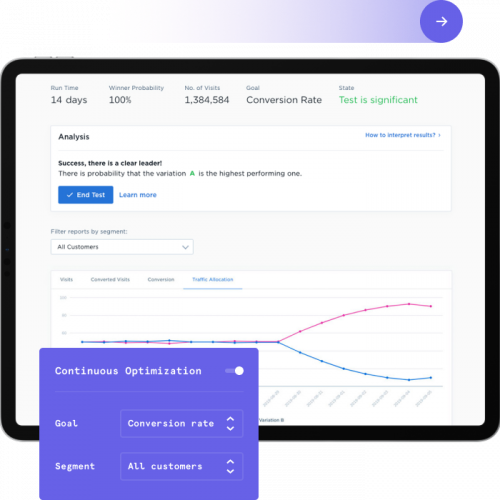
Key takeaway: Using self-learning machine learning algorithms for A/B testing your platform/product allows you to find the 'optimal' options quickly and accurately. This makes financial and operational sense as you don't need to invest your resources into repetitive and tedious tasks as machine learning can take care of them.
4. Image Processing
Machine learning models form the basis of image recognition systems, which can allow you to offer enhanced customer-centric search capabilities. How does this work? Here's how:
Let's say your customer is searching for a product online. They get a few irrelevant results and decide to abandon the site. This is where machine learning can help as it can identify key elements in images such as objects, people, content, actions, etc., and provide relevant options, thereby positively influencing the customer's behavior.
Pinterest's visual search feature - Lens - is an interesting case in point which allows the user to search for items they’ve captured through their phone's camera. The platform will then display relevant shoppable pins in visual search results:

For superior and contextual visual search capabilities, you need to get your hands on a robust image processing machine learning tool - one that can match your customer's photos and offer similar product suggestions based on the customer's preferences.
That's not all. The user's data can be segmented according to various categories such as color preference, brand choice, social media behavior, etc. While an AI Image enhancer will make sure your photos are optimized.
Key takeaway: Machine learning can automatically tag, categorize, and search content by attaching labels to images, videos, logos, and even non-photographic images for a more enhanced customer-centric search experience.
5. Fraud Protection
Detecting and preventing online fraud for eCommerce websites at scale should be every eCommerce business's top priority. One surefooted way of securing your website is by using machine learning applications that are trained to process huge amounts of repeating customers at an accelerated pace and prevent fraudulent online transactions - before they even occur.
Basically, if the transaction seems to be going off track (think: payment occurring from an unverified device, or if the transaction is happening at odd hours), the system can flag it as potentially fraudulent and nip the issue in the bud. All in all, machine learning can analyze genuine transactions and identify 'real purchases.'
Key takeaway: When it comes to online frauds, machine learning can beef up your cybersecurity measures and allow you to take a proactive approach instead of a reactive approach, which can make all the difference.
Wrapping Up: The Dynamic Role Of Machine Learning In eCommerce
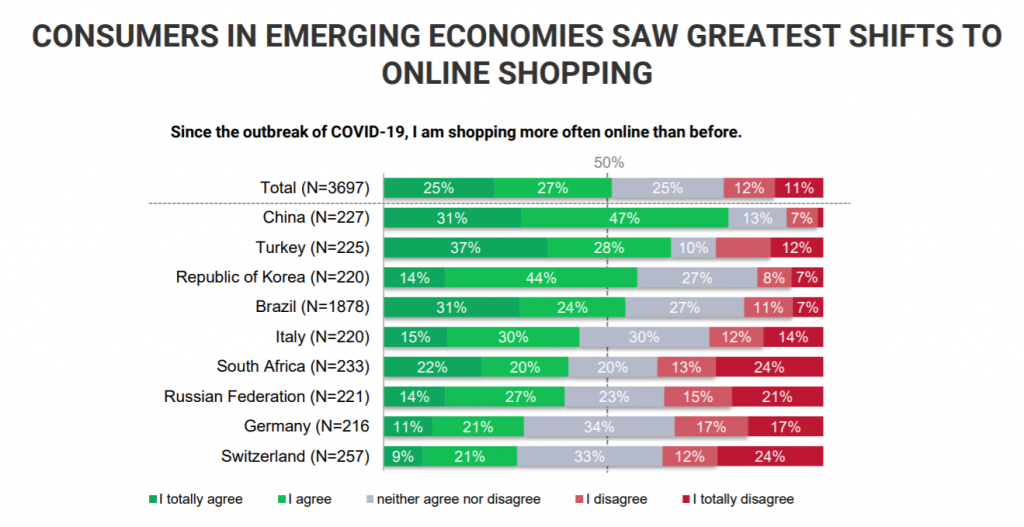
According to a recent report, the pandemic has fast-tracked the fundamental shift towards a more digital world - and online shopping is leading the way. In fact, the pandemic is said to have permanently changed the way people shop online. This is why more and more eCommerce websites need to rethink their business strategy. The time to second-guess the role of artificial intelligence in eCommerce is gone. Machine learning is the future of eCommerce, and the future is here.



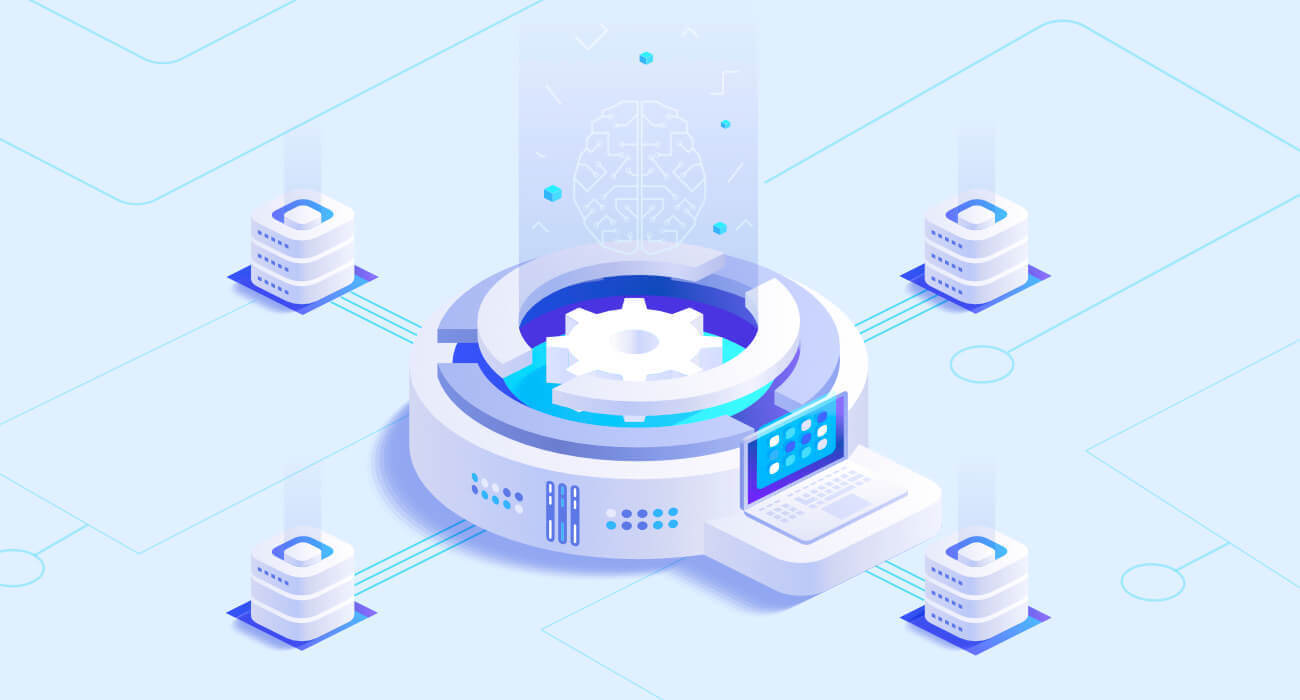











Leave a Reply